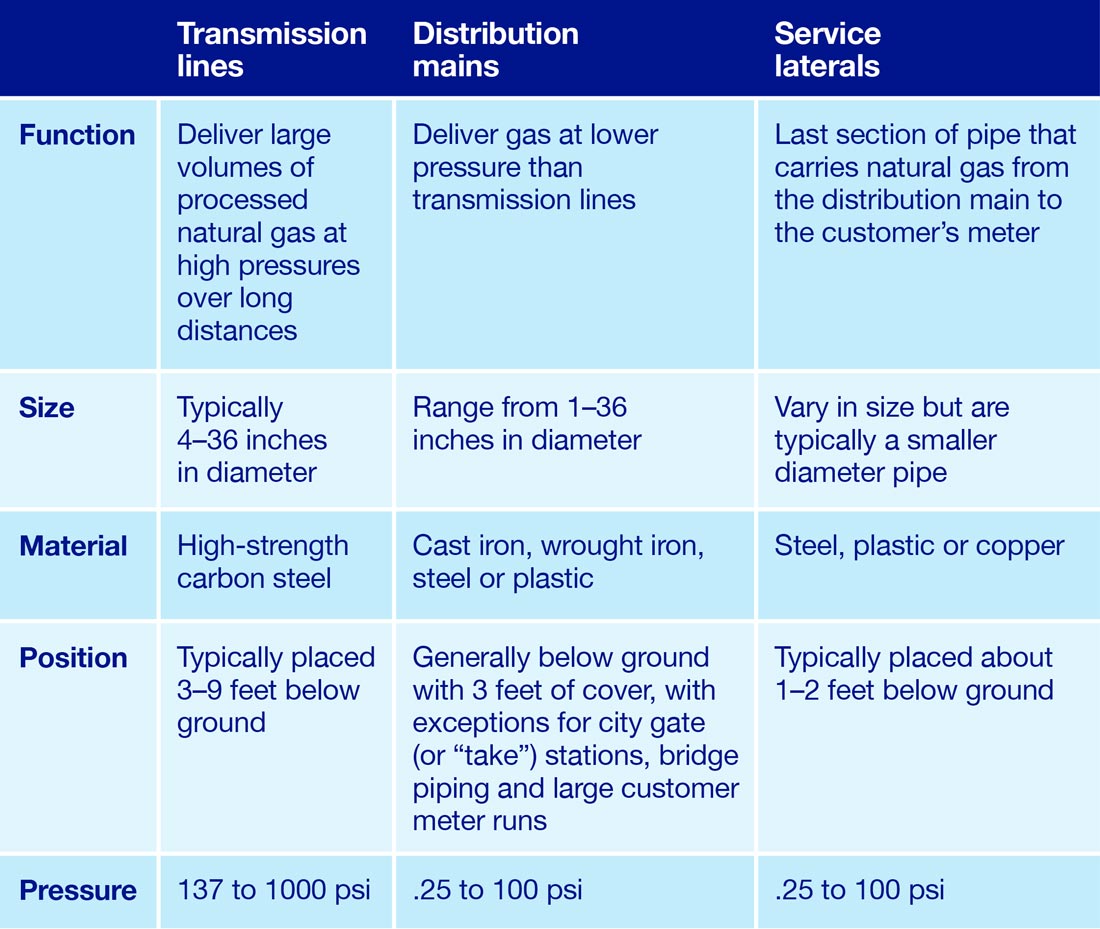| View in browser > |
 |
|
Welcome to National Grid’s Tips of the Trade for first responders. These tips are intended to help you respond safely and effectively to incidents involving natural gas and electricity. Please review them with your team.
|
|
| Do you know the characteristics of National Grid’s pipelines? |
| National Grid uses a series of pipelines to transport natural gas throughout its service area. Understanding the key functions and features of different types of pipelines will help you respond more effectively to incidents involving natural gas pipeline leaks and fires. |
 |
 |
 |
| Transmission lines |
| Transmission lines transport large volumes of natural gas at high pressures, often over long distances. The gas in National Grid’s transmission lines typically has no odor until it passes through a regulating station, which removes impurities and adds a chemical odorant that gives natural gas its distinctive, sulfur‑like scent.* Regulating stations also reduce pipeline pressure as required for the local distribution system. (Some large industrial and commercial customers receive natural gas directly from National Grid at transmission‑line pressure.) |
| *This scent may fade, or the gas may not be odorized, so don’t rely on your sense of smell alone to detect a gas leak. |
| Distribution mains |
| Distribution mains bring lower‑pressure natural gas from regulating stations to service laterals. Distribution mains are usually underground, located beneath public streets or adjacent to residential property lines; in rare cases, they may be located at the rear of properties. Some of National Grid’s distribution mains run aboveground under bridges built over roads and waterways. |
|
 |
| Transmission lines and distribution mains are controlled by a series of shut‑off valves. Never attempt to open or close these valves, because doing so could cause dangerous pressure changes in the system. These valves should ONLY be operated by trained National Grid personnel. |
|
|
|
|
|
 |
|
 |
 |
| Service laterals |
| Service laterals bring natural gas from a distribution main to the customer’s gas meter located at, or inside, a structure. For most structures, natural gas is supplied by just one service lateral. A single service lateral can serve one natural gas meter or multiple meters. |
|
 |
| Some service laterals include a safety feature called a curb valve. Curb valves are located at or near the property line and allow National Grid to shut off gas to a building. In some parts of National Grid’s service area, fire departments have been given specific tools and training to close curb valves. Only personnel who are trained and equipped should close these valves. |
|
|
|
|
|
 |
|
 |
| For more first responder safety information, visit firstresponder.ngridsafety.com. |
|
|
|
| |
| |
|
| To report emergencies, call 911 and National Grid immediately. Always call 911 if you suspect a gas leak! |
| |
 |
| In case of gas emergencies: |
 |
Long Island and the Rockaways:
911 and 1‑800‑490‑0045 |
 |
Metro New York:
911 and 1‑718‑643‑4050 |
 |
Upstate New York:
911 and 1‑800‑892‑2345 |
 |
Massachusetts:
911 and 1‑800‑233‑5325 |
|
|
|
|
| |
|
|
|
| |
| |
|
 |
#14849 © 2024 Culver Media, LLC |
|
| |
|
|
|
 |
|
|